 Weird Stuff
Weird Stuff  Weird Stuff
Weird Stuff  Mysteries
Mysteries 10 Tragic Disappearances and Deaths in Joshua Tree National Park
 History
History 10 Ways Childhood Really Sucked in the Old West
 Music
Music 10 Name Origins of Famous Bands from the 1990s
 Religion
Religion 10 Biggest Turnarounds by the Catholic Church
 Weird Stuff
Weird Stuff 10 Unbelievable Times Laws Had Unintended Consequences
 Humans
Humans Ten Historic Women Who Deserve Way More Credit Than They Got
 Movies and TV
Movies and TV 10 Films That Spawned Major Lawsuits
 History
History Ten Times Towns Were Wiped Off the Face of the Earth
 Creepy
Creepy 10 of the Most Disturbingly Haunted Public Houses in the UK
 Weird Stuff
Weird Stuff 10 Niche Subcultures That Are More Popular Than You Might Think
 Mysteries
Mysteries 10 Tragic Disappearances and Deaths in Joshua Tree National Park
 History
History 10 Ways Childhood Really Sucked in the Old West
Who's Behind Listverse?

Jamie Frater
Head Editor
Jamie founded Listverse due to an insatiable desire to share fascinating, obscure, and bizarre facts. He has been a guest speaker on numerous national radio and television stations and is a five time published author.
More About Us Music
Music 10 Name Origins of Famous Bands from the 1990s
 Religion
Religion 10 Biggest Turnarounds by the Catholic Church
 Weird Stuff
Weird Stuff 10 Unbelievable Times Laws Had Unintended Consequences
 Humans
Humans Ten Historic Women Who Deserve Way More Credit Than They Got
 Movies and TV
Movies and TV 10 Films That Spawned Major Lawsuits
 History
History Ten Times Towns Were Wiped Off the Face of the Earth
 Creepy
Creepy 10 of the Most Disturbingly Haunted Public Houses in the UK
10 Infamous US Housing Projects
Government-funded housing projects in the United States nearly all began with a common dream—to end urban slums and provide an affordable, safe housing option for low- to middle-income families. This dream has fallen so far that even many residents of some of the nation’s most infamous housing projects have called for their demolition. From gang violence to the robust drug trade to the incompetence of many local housing authority offices, large-scale government housing has seen some very dark days.
Sadly, it’s the projects’ most vulnerable residents, the young and the very old, who suffer the most. They are the ones who get caught in the crossfire of racially segregated, poverty stricken, structurally flawed buildings—the ones who the system truly fails.
10 Pruitt-Igoe
St. Louis
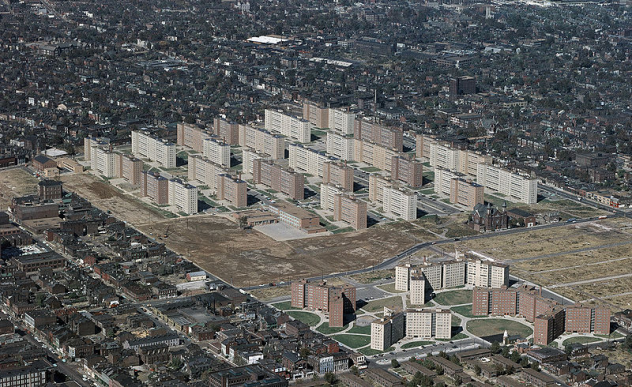
The infamous Pruitt-Igoe housing project was erected in 1954, when racial tensions were rife across the US. The megalithic complex consisted of 33 11-story buildings that shadowed the city below. The apartments were originally intended for middle-class families but quickly degenerated into crumbling residences that housed only the poor African-American population of St. Louis.
In the late 1940s, St. Louis was facing a rapidly declining population. Many middle-class people were moving out, and poor residents inhabited their homes, causing slums to crop up all over the city. To combat this, the government decided to erect high-rise homes that would house 15,000 residents and do away with low-lying slums for good. The planning commission in St. Louis nicknamed the towers the “Poor Man’s Penthouse.” Rather than eradicate ghettos, these apartments simply became the city’s newest slums and a hotbed for crime.
Only a decade after they were built, the Pruitt-Igoe towers began to resemble an eerie and nearly empty hull. The occupancy rate dropped dramatically due to accidents caused by flaws in architectural planning as well as the ongoing crime and vandalism. The buildings were infested with rats and had faulty electric wiring. The elevators were designed to skip several floors to minimize riding time, causing the floors in between to become popular spots for muggings. Resident complaints included people urinating in the stairwells and elevators, clothes being stolen from laundry rooms, fights, trash thrown out of windows, and women being unable to move around the buildings alone for fear of being attacked.
By the 1970s, the government decided that the housing project was a failure and began to demolish the buildings on live television.
9 Jordan Downs
Watts, Los Angeles
Jordan Downs was built in the 1940s to house the many new workers arriving, predominately from the Southern US, for employment in factories to support the war effort. Many of the individuals who migrated to California were hoping to escape the segregation that was so prevalent in their Southern home states. By the 1960s, Jordan Downs was nearly 100-percent black, and by 1965, tension between whites and blacks reached a tipping point, resulting in the Watts Riots. The riots lasted six days and engulfed 130 square kilometers (50 mi2) in violence, culminating in 34 deaths, over 1,000 injuries, and the destruction and damage of 600 buildings. Sadly, this was not the last violent episode that the Downs would see over the following decades.
From 2000 to 2011, 25 people were killed in the complex. In 2006 alone, Jordan Downs experienced 19 gang-related shootings and seven deaths. The housing project is home to the Grape Street Crips, a South Los Angeles street gang that has claimed the Downs as its turf. In 2007, the gang’s stranglehold on the complex was such that a civil rights attorney who headed a project to support a Watts gang truce stated that if residents wish to move into Jordan Downs, they must get permission from the Grape Street Crips rather than the housing authority. Ironically, the complex itself resembles a prison, with 103 two-story buildings that are marked according to their building number. They sit atop brown patches of dirt and grass like massive concrete barracks.
Today, the housing project is home to about 2,700 residents, and the unemployment rate is around 24 percent. It’s very likely that one or more members of a family will be incarcerated in his or her lifetime. Things are looking up for the project, however, with a redevelopment plan in the works and the murder rate lower in more recent years.
8 Louis Heaton Pink Houses
Brooklyn
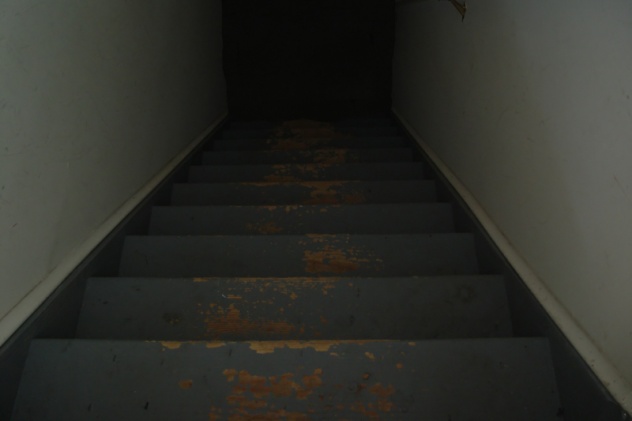
The Louis Heaton Pink Houses, better known as the Pink Houses or simply “the Pinks,” was constructed in 1959 and consists of 1,500 apartments in 22 eight-story buildings. Its residents have described the complex as a hellhole. The unlit stairwells are particularly perilous areas, where violence and the constant presence of illegal firearms have both inhabitants and police in a constant state of anxiety. The lighting is not the only aspect that is neglected at the Pink Houses; trash piles up in front of the project faster than it can be removed, and the smell is utterly overwhelming.
In 2005, the gang known as the Pink Houses Crew built quite a savage reputation for themselves by robbing jewelry stores and dropping badly beaten bodies along the expressway. The sound of gunshots on Saturday night is not uncommon, and many residents are afraid to leave their homes in the evenings. Many living in the Pinks also fear the presence of those who are meant to protect and serve them. In 2014, Akai Gurley, a 28-year-old unarmed resident, was shot to death by an NYPD officer in a dark stairwell inside the Pink Houses. It was reported that the officer spent nearly 20 minutes arguing with his partner over who should call in the shooting to supervisors before assisting the dying Gurley. (The officer who shot Gurley was found guilty of manslaughter in February 2016.)
7 Johnston Square Apartments
Baltimore
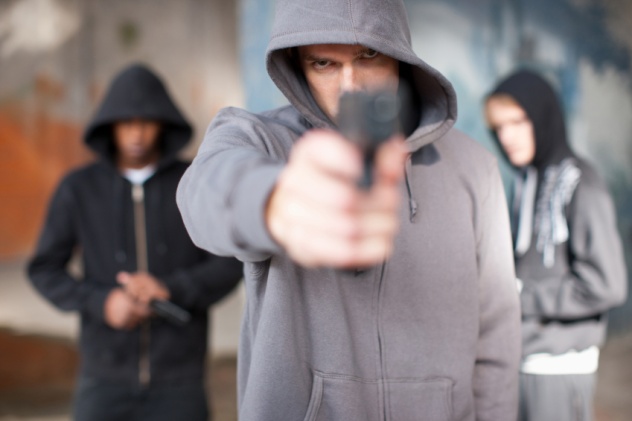
When a television show about narcotics dealers and users set in the city of Baltimore uses the Johnston Square neighborhood as its onscreen background, you have to assume that it must be for a specific reason. The HBO drama The Wire has used Johnston Square, on Baltimore’s East Side, as a filming location on more than one occasion. Like many crime-prone government projects, Johnston Square used to be a safer, more hospitable place to live—a far cry from recent realities. Over the years, the community living in Johnston Square has seen and fallen victim to much violence, including shootings, drug-related crimes, and gang warfare.
The complex was selected for revitalization and now serves as residences for individuals age 60 and over. However, the presence of gang violence still forces many inhabitants indoors during the evenings. The apartments sit on a block that two rival gangs, the Black Guerilla Family and the Bloods, have claimed as their drug turf. Many of the row houses in the same neighborhood remain vacant and condemned, with several bail bond businesses scattered in between. This is an especially convenient location for such enterprises, given that a portion of the Baltimore City Correctional Facilities sits within its borders.
6 Magnolia Projects
New Orleans
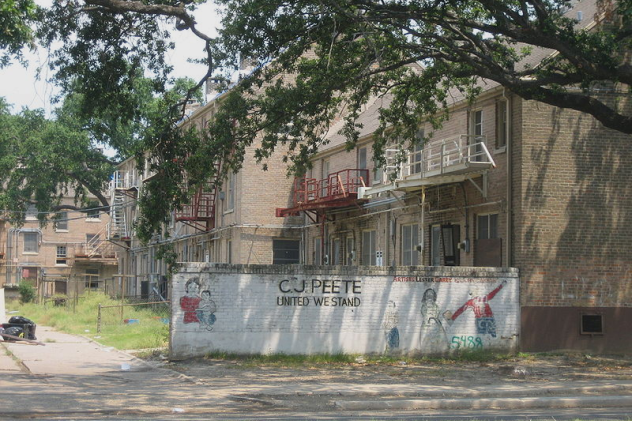
New Orleans has an amazing culinary, music, and art scene. The symphonic sounds of jazz and the aromatic smells of Cajun cooking are fondly associated with the city by many of its visitors and residents. However, the city also has a much different aspect to it, one that is less visible to tourists. New Orleans has long been one of the murder capitals of the US.
The Magnolia Projects, also known as the C.J. Peete Projects, definitely saw its fair share of death and violence before being revitalized. New Orleans native and rapper Juvenile described the complex as a haven for drug dealing and violent crime. In a song, he described it like this: “On New Year’s that lights get shot out at six o’clock/Four or five o’clock in that morning’ you gon’ be gettin’ shot.”
The heavy crime and difficult circumstances gave many living in the projects a need to break out. Several of hip-hop’s notable names were born and raised in the Magnolia projects and sought to share their hardships through their music. Artists like Birdman, Juvenile, and Turk all hail from Magnolia. A young female rapper nicknamed Magnolia Shorty, because she was raised in Magnolia, was one of many victims in some of the project’s most dangerous times. The hip-hop star was shot to death in 2010 in her car not far from Magnolia. Her murder still remains unsolved.
When Hurricane Katrina hit in 2005, nearly 600 people were evacuated from Magnolia, and the projects were largely abandoned. In 2008, the last of the Magnolia apartments were torn down, and the complex was replaced by a new housing development called Harmony Oaks.
5 Techwood Homes
Atlanta
Techwood Homes, built in 1936, was the nation’s oldest housing project, located across the street from the Georgia Institute of Technology (GT), on of Georgia’s most prestigious universities. The inequality between the two was glaringly obvious. Contrary to GT, which is a hub for some of the nation’s best and brightest, Techwood was a highly under-served community with many residents making less than $5,000 annually. People were living in overcrowded, dilapidated buildings like animals. Abundant graffiti that covered the facade of the apartments. Trash was piled waist-high in some places, and drugs and gang violence were rampant.
For years, the so-called Miami Boys, a drug-dealing street gang from South Florida that set up shop in Atlanta to push weapons and crack cocaine, plagued the project. They loitered on street corners, visibly brandishing automatic weapons and paralyzing the community with fear. In 1988, to prove their dominance over their drug competitors, they kidnapped a 22-year-old man from Techwood, shot him in the head several times, and dumped his body. The ultimate irony is that after Techwood was built, President Franklin D. Roosevelt applauded it as “a tribute to useful work under government supervision and the first step in building a safety net for the working poor during the Depression.”
4 Queensbridge Houses
Queens
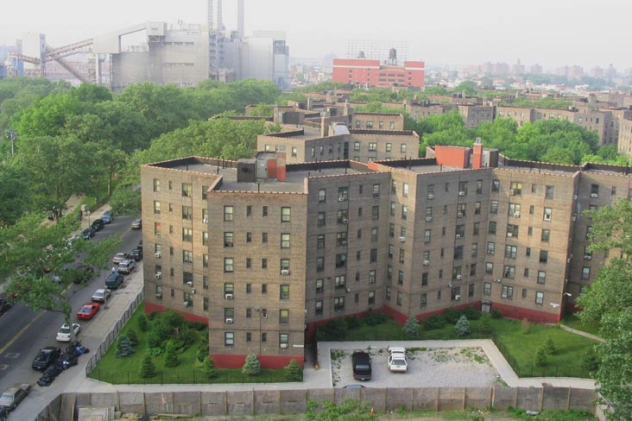
More than a few notable people hail from the Queensbridge projects. If you’ve ever listened to rapper Nas’s album Illmatic, you’ll have a pretty good idea of the state that these projects were in during the 1990s. Nas describes a place that is dark and dreary, with excessive crime and the possibility of being murdered at any moment.
Queensbridge is located in Long Island City and is the country’s largest government housing project, with over 3,000 units and just under 7,000 residents. As the crack epidemic gripped New York City in the 1980s and 1990s, the projects were choked and suffocated. Queensbridge became an “open-air drug market,” in plain view of children and families living in the units. In 2005, 37 members of a very active drug-dealing gang known as the Dream Team were arrested in the Queensbridge complex. They were making $10,000 a week in sales.
PS 111, a public elementary school, has many students from nearby Queensbridge and came under scrutiny in 2015 for being one of the most dangerous schools in Queens for the second year in a row. Violent and disruptive reports coming out of the school have caused many parents to be quite alarmed at the conditions that students are facing. In March 2015, a tutoring session led by a group of teenagers was transformed into a nightmarish scene. The teenagers set up a type of fight club, pitting groups of first grade students against each other while they watched on for their own enjoyment.
For those not living in the projects themselves, there is still an opportunity to see how residents live. An organization known as Jane’s Walk organizes public walking tours through the Queensbridge complex. The walking tour lasts approximately two hours and covers topics such as the violent history of Queensbridge, the rap icons who were born and raised there, and the ongoing revitalization projects.
3 Robert Taylor Homes
Chicago
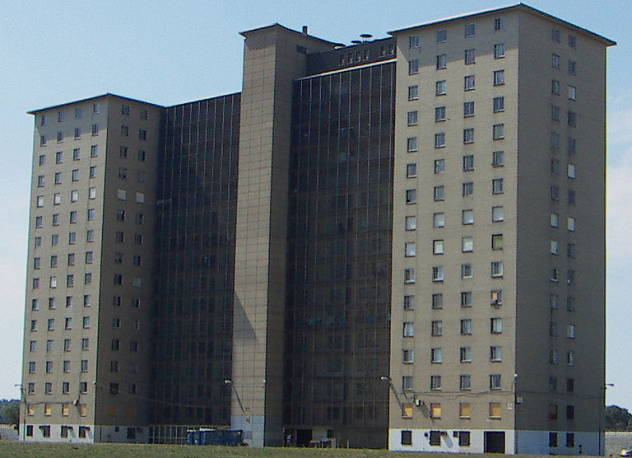
The Robert Taylor Homes opened in 1962 with 16 high rises and 27,000 occupants at capacity. Over 70 percent were children, and nearly all of the residents were African-American. Not too long after its completion, the homes quickly took a turn for the worse. Even the Chicago Housing Authority (CHA) called portions of the project “the worst slum area in the United States.” One particularly awful section of the complex, known by locals as “The Hole,” was controlled by a street gang called the Mickey Cobras, who were constantly embroiled in turf wars with their rivals, the Gangster Disciples. The Mickey Cobras have been known to recruit children as young as 12.
Crime in Chicago was at a high during the 1990s, but the Robert Taylor Homes were like their own hellish world of criminal activity. In 1993, it was estimated that the likelihood of being a victim of violent crimes such as sexual assault, murder, shooting, or robbery in the Taylor projects was more than 10 percent.
Another factor that plagued the project was poor infrastructure and lack of maintenance. Elevators broke down constantly, forcing people to climb out in between floors. Accidental deaths were not uncommon. In one incident, three children died because a broken elevator prevented firemen from reaching the 14th floor in time to save them. Demolition of the Robert Taylor Homes began in 2002, and more than half of the former residents are still waiting for the replacement housing promised by the CHA.
2 Marcy Houses
Brooklyn
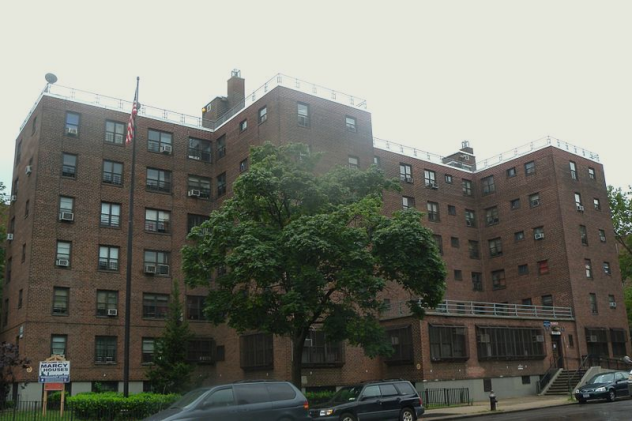
The Marcy Houses were completed a few years after World War II in 1949. The project is comprised of 27 six-story buildings with 1,717 apartments and nearly 4,500 residents. A notable former resident of this project is rapper Jay Z, who has described the homes as “a block away from hell,” the place where “news cameras never come.” One frequent visitor to the projects however, is the NYPD. Gang disputes are not uncommon, and residents often hear the crack of bullets. In 2014, four teenagers were shot, and one killed, in the Marcy Houses due to turf wars.
Crack hit the Marcy Houses in the 1980s like a ton of bricks. Many young children began selling the drug just to pay their addicted parents’ utility bills. Jay Z himself admits to succumbing to the drug trade, selling crack in Marcy as a teenager. Violence overtook his life when he was just nine years old: A gang member stabbed his uncle to death. On December 20, 2015, two police officers were shot and killed a block from the Marcy Homes. Since the shooting, police have been scarce in Marcy. Some of the residents are quite pleased about the lack of officers, stating that their presence can often cause more issues, while others worry for their safety.
1 Cabrini-Green
Chicago
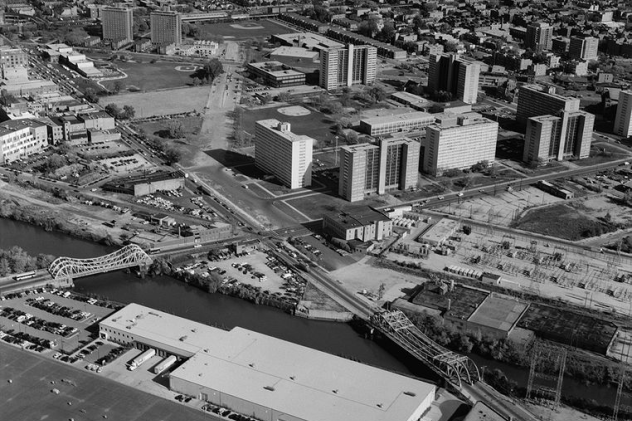
Like so many other housing projects, Cabrini-Green was seen as a symbol of hope for Chicago. The entire complex was built over 20 years and was the Chicago Housing Authority’s plan for urban renewal. In total, Cabrini-Green covered 70 acres and was located in the city’s North Side. Not too long after its construction, problems began to develop in the complex. Poverty-stricken tenants dealt with drugs and violence on a daily basis.
In October 1992, a sniper on the 10th floor of the project murdered a seven-year-old child with an AR-15 semi-automatic rifle. Despite cops being parked nearby, the little boy was the third local elementary school student to be killed within a seven-month period. In 1981, then-Mayor Jane Byrne and her husband decided to move into the Cabrini-Green project to display her solidarity with the residents. She lasted all of three weeks before moving out.
The violence that plagued the project had most residents fearful to leave their homes. One horrific crime in particular took place in 1997, when a nine-year-old girl was attacked in a stairwell and brutally raped. Her attacker sprayed cockroach repellent into her mouth and scrawled gang symbols all over her stomach. The child was in a coma for several weeks, and although she survived, she is unable to speak and is paralyzed from the neck down.
In addition to the very real violent activity in the complex, Cabrini-Green was also the setting for the classic 1992 horror film Candyman. The director said that he chose the location for the film “because it was a place of such palpable fear.” Demolition of Cabrini-Green began in the late 1990s, with the final high-rise portions of the failed housing project coming down in 2011.
Lee DeGraw is a freelance writer with an inquiring mind.






